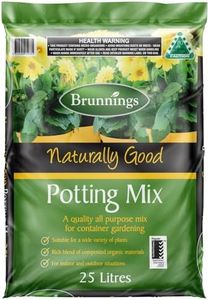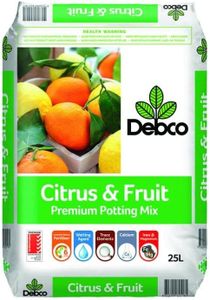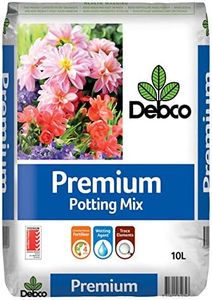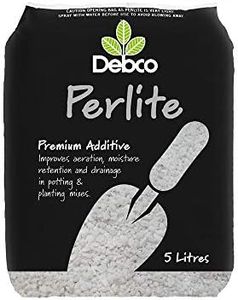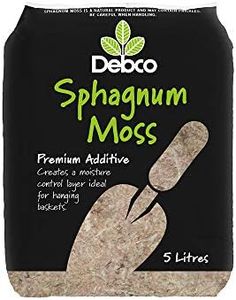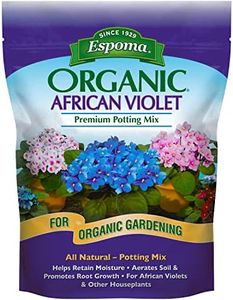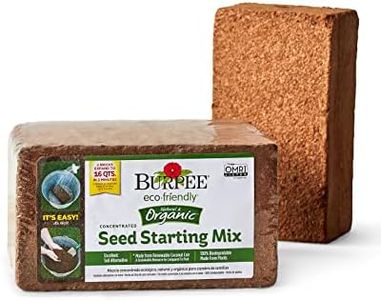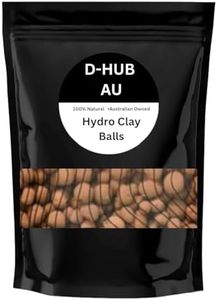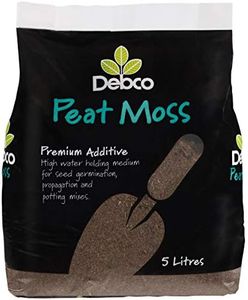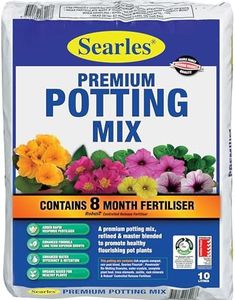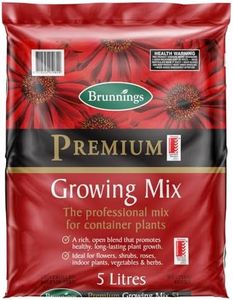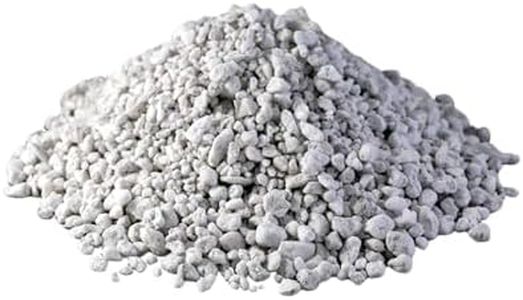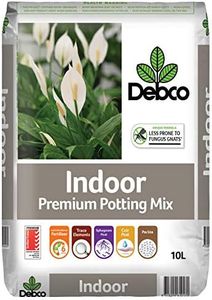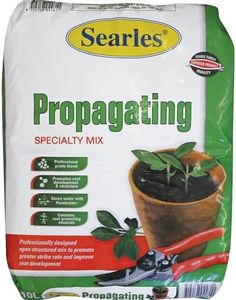We Use CookiesWe use cookies to enhance the security, performance,
functionality and for analytical and promotional activities. By continuing to browse this site you
are agreeing to our privacy policy
10 Best Potting Soils
From leading brands and best sellers available on the web.Buying Guide for the Best Potting Soils
Choosing the right potting soil is essential for healthy plants, whether you're growing indoor plants, outdoor containers, seedlings, or even specialty plants like cacti and succulents. The goal is to select a soil that provides the right balance of nutrients, drainage, and structure for your plant's needs. Consider the type of plant, where it will be grown, and how much maintenance you're willing to give. Knowing a few key features will help you make a choice that supports strong, thriving plants.Soil CompositionSoil composition describes what materials are mixed into the potting soil, such as peat moss, coconut coir, compost, perlite, and vermiculite. This mix determines things like water retention, airflow, and how easily roots will grow. Some potting soils have mostly organic matter to hold water and nutrients, while others have more inorganic ingredients for better drainage. If you're growing plants that like moisture, like tropicals, go for higher organic content. For cacti and succulents, choose a soil with lots of sand or perlite to encourage quick drainage. Let your plant's native growing environment help guide your decision.
Drainage & AerationDrainage and aeration are about how quickly water flows through the soil and how much air reaches the roots. Good drainage helps prevent waterlogged roots, which can cause rot, while adequate aeration helps roots get the oxygen they need. Soils with big, chunky ingredients like perlite, bark, or pumice usually offer the best drainage, while finer-textured soils hold more water. If you're unsure, pick a mix that feels light and fluffy, not dense or muddy—this has a good balance for many houseplants.
Nutrient ContentNutrient content means how much of the essential plant food—like nitrogen, phosphorus, and potassium—is already in the soil. Some potting mixes have fertilizers added that slowly release nutrients, while others rely on what is naturally in the organic matter. Seed-starting soils typically have fewer nutrients to avoid overwhelming young plants, while mixes for mature plants may include more fertilizer. If you want less frequent feeding, pick a soil with added slow-release nutrients. If you prefer to control fertilizer yourself, pick a plain mix and add your own plant food as required.
Moisture RetentionMoisture retention describes how well the soil holds onto water after watering. Soils with lots of peat moss or coir tend to stay moist longer, while sandy or cactus mixes dry out quickly. Plants like ferns or peace lilies prefer soils that hold moisture, while succulents, orchids, and herbs like rosemary do much better in soil that dries out fast. Think about how often you want to water, and match the moisture level to your plant's natural needs.
pH LevelpH level is a measure of how acidic or alkaline the potting soil is on a scale from 0 to 14. Most common houseplants do best in a neutral to slightly acidic soil (about 6.0 to 7.0), but some plants, like hydrangeas or azaleas, prefer more acidic soil. Most potting mixes are made to suit general houseplants, but if you're growing a plant that likes a specific pH, you may want to look for specialty soils. If unsure, stick with all-purpose mixes, as they're designed for versatility.
SterilitySterility means whether the soil has been treated or processed to kill weed seeds, pests, and diseases. Sterile soil helps prevent problems like fungus gnats or mold, especially for delicate seedlings or indoor plants. If you are starting seeds or have had pest issues in the past, look for bagged mixes labeled as sterile. For outdoor container plants, sterility is less critical because outside environments quickly introduce new organisms anyway.
